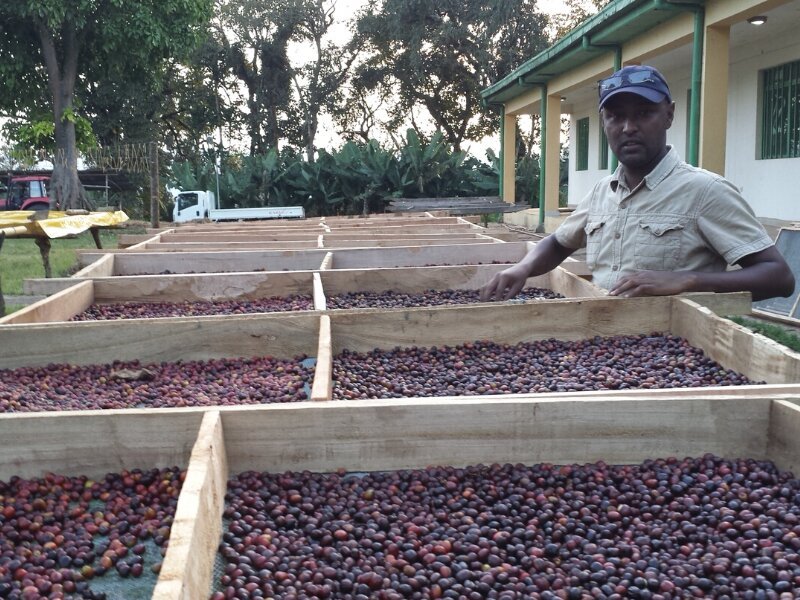
Researcher Addis Alemayehu with collected coffee cherries drying on a wire mesh. American Society of Agronomy press photo by Fikadu Ejigu.
Working in coffee’s genetic birthplace, a group of researchers in Ethiopia recently explored a question that’s confounded the coffee industry since the dawn of commercial cultivation: What factors most impact coffee quality?
What they found was that coffees picked most consistently at peak ripeness that were kept within specific moisture content ranges throughout their processing journey exhibited the best quality characteristics, including better sweetness and acidity ratings.
The research was primarily concerned with factors in the production and post-harvest processing of green coffee, including location and elevation, production system type (forest, semiforest or full-sun “garden coffee”) and post-harvest processing method (fully washed/wet, semi-washed/honey/pulped or natural/dry).
In exploring these factors, the research team gathered a wide range of coffees from three different growing regions in the Kafa Biosphere Reserve in southwest Ethiopia’s Kaffa Zone. Considered the genetic birthplace of arabica coffee and home to more than 5,000 varieties of wild arabica, the reserve is a designated Unesco heritage site.
Important factors such as temperature, rainfall patterns, altitude, relative humidity, soil composition and sunlight — each varying by location within the study’s framework — were taken into account. Each of the study coffees was also subjected to all three primary post-harvesting methods prior to laboratory analysis and professional coffee tasting of roasted, brewed beans.
Interestingly, the researchers found more consistent and favorable results in natural/dry-process coffees.
Related Reading
- How Growing and Consuming Coffee Can Actually Help Forests
- Most Wild Coffee Species, Including Arabica, Are Now in Danger of Extinction
- Flavor Development: The Relationship Between Time and Color in Coffee Roasting
“The study confirms that, in addition to the selective hand-picking of red-ripe berries, better quality coffees can be obtained by using the dry processing method within the recommended range of green bean moisture content,” the research team wrote. “Compared with garden coffees, forest and semiforest coffees respond poorly in odor and overall raw quality when they are treated with wet and semiwet processing methods.
However, the researchers repeatedly noted that the study was limited to coffees grown at specific elevations, all within the confines of the Kafa Biosphere reserve, and results may not be universally applicable to coffees produced elsewhere.
“To improve the livelihoods of producers through proper conservation of the forests, all coffee types, specifically forest-based coffees, should be harvested at the right ripening stage and processed with the dry method at the recommended moisture content to have the best physical and organoleptic qualities,” the authors wrote.
The full study was published earlier this year in the journal Agrosystems, Geosciences and Environment, a publication of the American Society of Agronomy.
Does your coffee business have news to share? Let DCN’s editors know here.
Nick Brown
Nick Brown is the editor of Daily Coffee News by Roast Magazine.
Comment
1 Comment
Comments are closed.






The bright future is coming for the arabica coffee and for Ethiopia, proud of being Ethiopian.